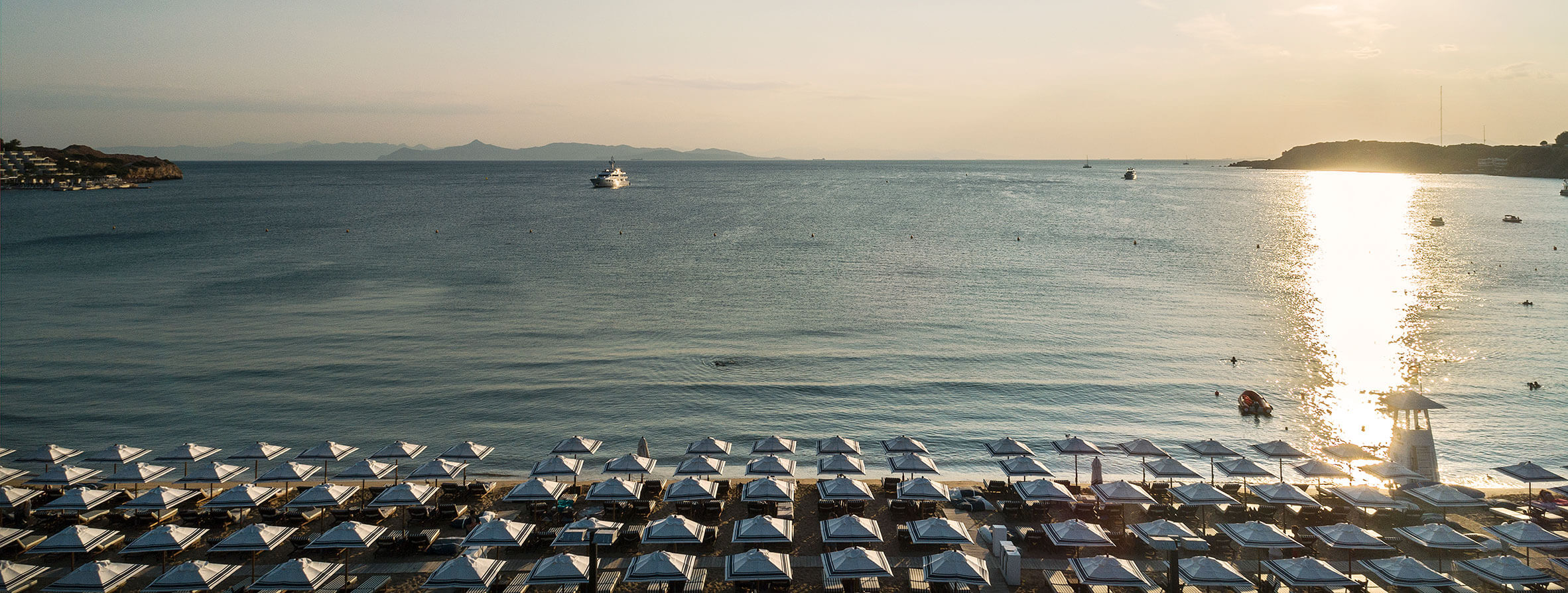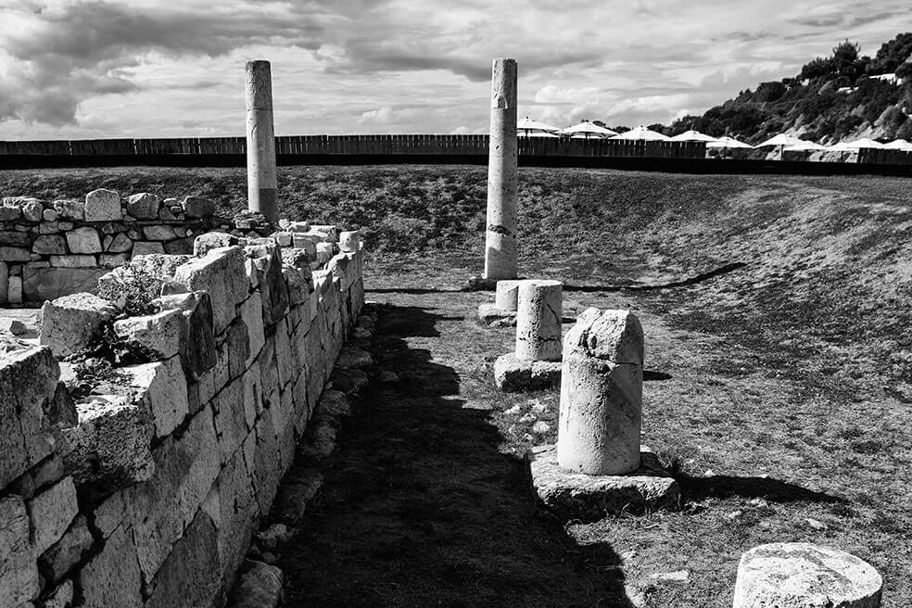Astir Beach
Feel the ocean breeze and embrace the warmth of the sun
With its pristine blue waters and mesmerizing sunsets, Astir Beach offers a luxurious seaside escape. Immerse yourself in the ultimate coastal experience.

Our History
Our story begins in 1959, on a beautiful sandy beach with crystal clear waters and warm delicate sand. The long and majestic coastline, surrounded by pine trees, becomes the “Astir Beach”.
Astir Beach, both in allure and location, has been hosting the Athenian elite as well as international VIPs for decades. Designed by the prominent Greek architect Kostas Voutsinas, Astir sets an unprecedented aesthetic standard, introducing its trademark colorful beach umbrellas and the seagull-inspired beach shades among myriad others.
In 1966, with the opening of the ski school, Astir beach makes celebrity history, as it is often visited by Christina Onassis, Joan Collins, Brigitte Bardot and other famous personalities. Ship owners, businessmen, rock stars, actors, and politicians make it one of their favorite destinations. Astir beach establishes itself as a priceless holiday treasure for the Greek and international elite, a status that is well deserved and remains throughout decades.
In 2008, the complex is once again being renovated by architects Zeppos – Georgiadi and Associates, who retain the exterior but alter the interior significantly, redesigning the décor while flirting with black and white hues.
Temple of Apollo Zoster
Dated back to the 6th century BC, the Temple of Apollo Zoster graces Astir Beach with its elegant marble altars and thrones.
Official documentation of the history of this exquisite area begins in 1924 with a chance event: a small party of children from the Archdiocese Orphanage went to the beach to play. As they dug around in the sand, they unearthed pieces of columns, marble pedestals and a fragment of an inscription naming the site as the Temple of Apollo Zoster. In 1926 and 1927, an excavation lead by archaeologist K. Kourouniotis brings an important ancient sanctuary to light that is part of the ancient deme of Halai Aixonides: the temple of Apollo Zoster, a plain limestone temple with a rectangular sekos, dated to the 6th century BC. The name of the temple derives from an ancient Greek myth: Persecuted by Hera, the pregnant Leto, Zeus’ mistress, tried to find shelter in the Aegean islands in order to bring the child of the “father of the gods” into the world. Banished from every place, she made a final attempt to fly to Delos under the protection of Athena. However, she went into labor above the site of modern Vouliagmeni and had to loosen her belt (zoster) to ease the pain. That is the prevailing theory as to the origin of the name of the temple.
**Announcement to Black Card Holders
Dear Black Card Holder,
We would like to inform you that the validity period of your Black Card has been extended until December 31st, 2026, provided that there are remaining available visits, in accordance with the card’s terms of use.
Please take the above into consideration when planning your visits.
Sincerely,
Astir Beach











